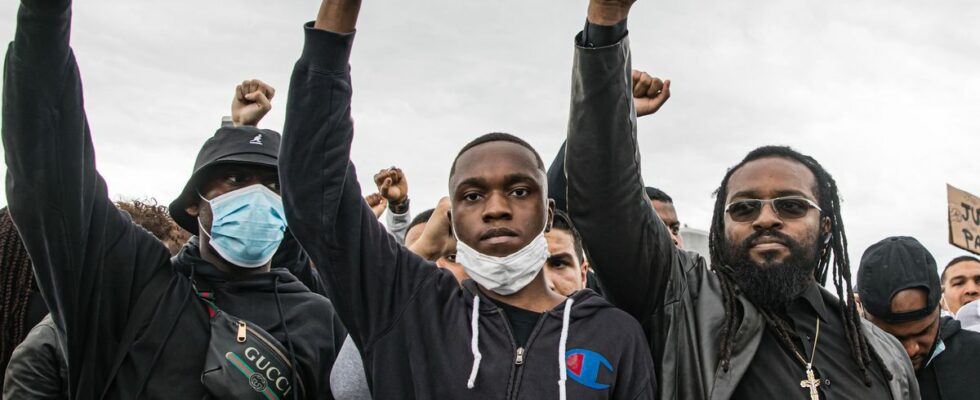91%. The number is dizzying. 91% of black people questioned by the polling institute Ispos, at the origin of the discrimination barometer presented by the Cran (Representative Council of Black Associations in France) on Wednesday, say they have “often” or at least “from time to time” been confronted with discrimination because of their skin color. “It’s a scandalous and massive phenomenon”, denounces Patrick Lozes, president of the Representative Council of Black Associations, to 20 minutes. “It is not only a barometer of discrimination, but also a barometer of republican integration, of living together”, warns the activist, who sees the “values” of France flagging.
In 2007, the Cran had already published an equivalent tool, 56% of black people then responding to face discrimination. Has hatred become commonplace? On the contrary, “we are very sensitive to discrimination, and we are much more courageous to denounce it”, analyzes the sociologist Michel Wieviorka, director of the international platform on racism and anti-Semitism. “Hard to say that there is more racism,” he said.
A “more discreet, more muted” racism
Since 2007, “we are no longer in the same company”. And on the issue of discrimination, two major phenomena emerge. First, four presidential campaigns later, the extreme right has continued to progress. “But it is an RN less explicitly racist and anti-Semitic than twenty years ago, who tried to de-demonize himself. Another trend is the development of networks, anonymous speech and online hate. However, the sociologist believes that “what circulates the most on social networks is not anti-black hatred, and prejudice should not be confused with discrimination, which is a different logic”.
However, Patrick Lozes reads through this barometer “a liberation of racist speech”. “When a deputy dares to interrupt another by telling him to return to Africa, when the players of the French team are taken to task for their skin color when they miss a shot on goal, we have to wonder” , he says. And this liberation “necessarily translates into a liberation from discriminatory acts”, according to him. Michel Wieviorka rather observes “a distance between the discourse and the reality of behavior”. The sociologist, on the other hand, emphasizes “indirect, institutional discrimination”, such as in the world of work or when renting an apartment.
“No one is explicitly racist but the result is racist,” he says, describing a “more discreet, more muted” mechanism. Thus, 31% of respondents described being most often discriminated against at work. But Patrick Lozes wants to retain “hope” through another figure: “85% of the general population is in favor of the fight against discrimination being a priority” of the public authorities, which it calls for action.
The painful question of tools
But how to do it ? Difficult, as for the fight against inequalities between women and men, to set up certain indicators. “Nobody will criticize the approach when we objectively count” according to their sex or when we compare their salary, raises Michel Wieviorka. But “if we touch on skin color, we relaunch the debate on ethnic statistics”, sensitive in France, where “the idea of race is based on objective criteria” and can quickly drift towards a classification, deciphers the sociologist, unlike “the Anglo-Saxon world, where race is a representation”.
However, “if we don’t have data, it’s difficult to say if and where we have victims, and to put measures in place,” he notes. Patrick Lozes has other ideas for filling the government’s toolbox in this area. The president of Cran thus calls for “associating” the associations on the ground with the actions of the State, in particular concerning “help with homework” and “republican integration”. “The role of the Republic is to create equals”, he said, quoting Léon Gambetta, also considering “abnormal that public service workers are not trained in the fight against discrimination”. In short, the construction site is open. And it is huge.

